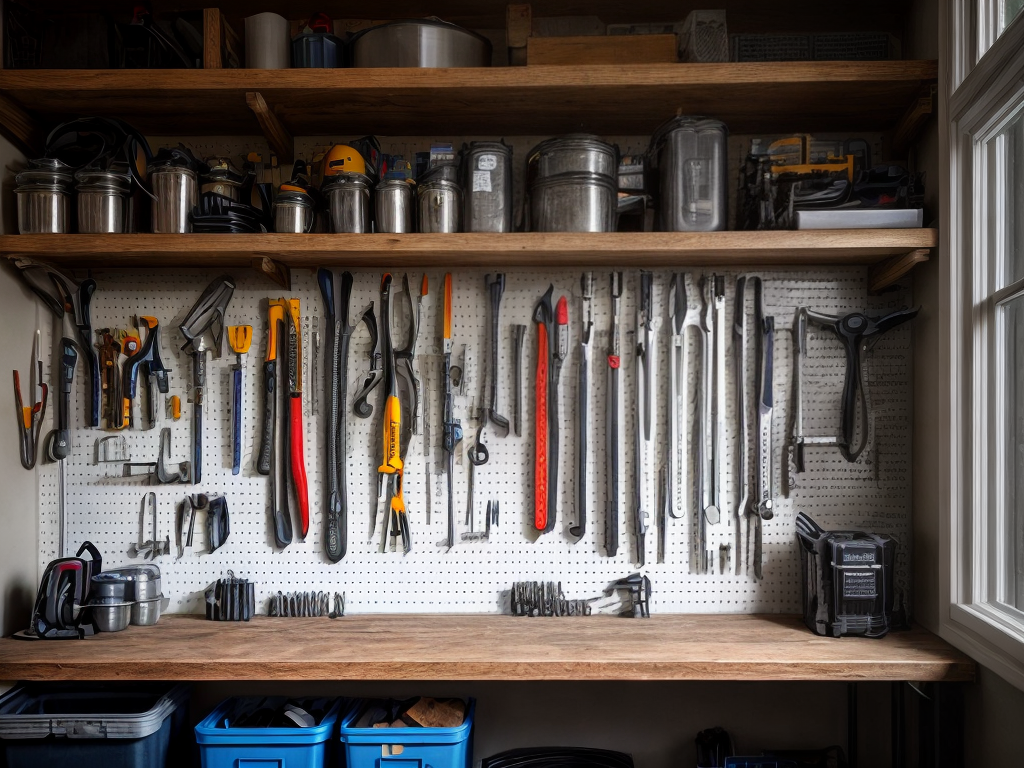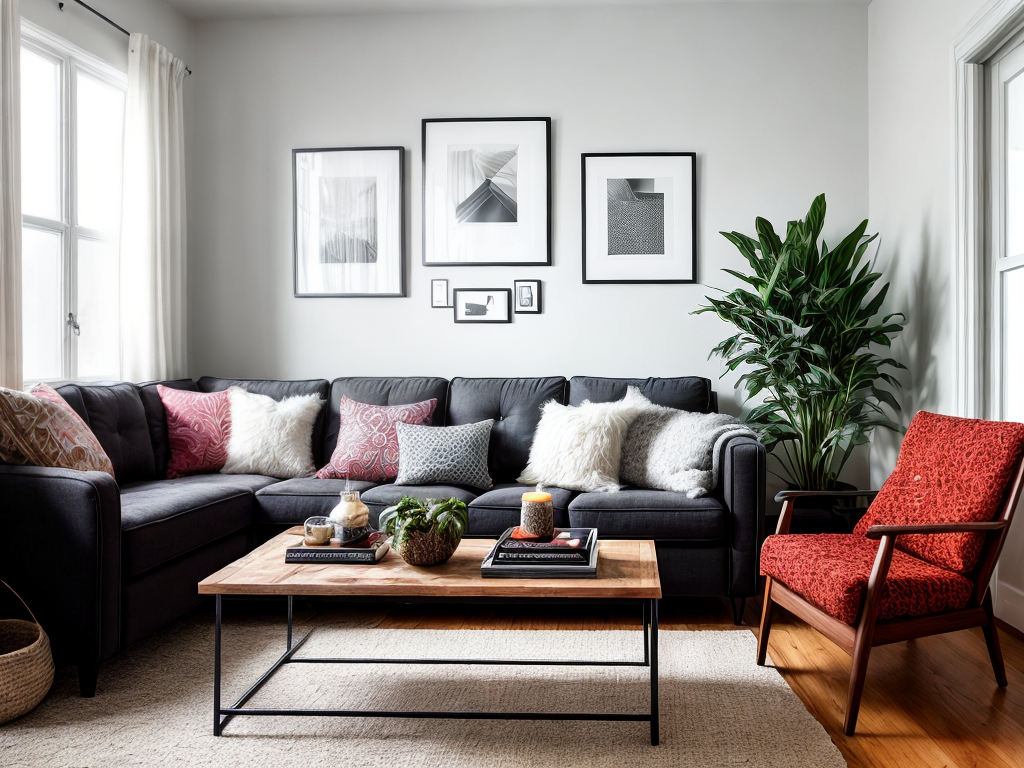
As I walked through my newly remodeled home, I couldn’t help but notice the fresh scent of nature lingering in the air. It was as if the walls themselves were breathing life into the space. This transformation wasn’t just a result of a fresh coat of paint or new furniture; it was the result of using eco-friendly materials throughout the entire remodel. From sustainable wood options to energy-efficient appliances, I had made a conscious decision to create a home that not only looked beautiful but also had a positive impact on the environment. If you’re considering a home remodel, join me as we explore the world of eco-friendly materials and discover how they can transform your space, while making a difference for the planet.
Sustainable Wood Options
When it comes to sustainable wood options for your eco-friendly home remodel, there are several choices available that can help reduce environmental impact. One of the most important considerations is using renewable timber sourced from sustainable forestry practices. Sustainable forestry refers to the responsible management of forests, ensuring that trees are harvested in a way that allows for natural regeneration and preserves biodiversity.
Opting for renewable timber means choosing wood from forests that are carefully managed to minimize negative impacts on the environment. This includes practices such as selective logging, where only mature trees are harvested, and reforestation efforts to replace those trees. By selecting wood from sustainably managed forests, you can support the conservation of natural resources and help combat deforestation.
Certification programs like the Forest Stewardship Council (FSC) and the Programme for the Endorsement of Forest Certification (PEFC) ensure that the wood you choose comes from responsibly managed sources. These certifications provide assurance that the wood has been harvested sustainably and can be traced back to its origin.
Energy-Efficient Appliances
Now let’s explore the next step in creating an eco-friendly home remodel by focusing on energy-efficient appliances. When it comes to reducing energy consumption and minimizing your carbon footprint, investing in energy-efficient appliances is a crucial step. Not only do these appliances help you save on your energy bills, but they also contribute to a healthier environment.
To help you make informed choices, here is a table showcasing the benefits of energy-efficient lighting and solar panels:
| Energy-Efficient Lighting | Solar Panels |
|---|---|
| Use up to 80% less energy | Generate clean and renewable energy |
| Last up to 10 times longer | Reduce reliance on fossil fuels |
| Emit less heat, reducing cooling costs | Contribute to the fight against climate change |
| Available in various options (LED, CFL) | Provide financial incentives and tax credits |
Energy-efficient lighting, such as LED and CFL bulbs, not only use significantly less energy but also last longer compared to traditional incandescent bulbs. This means fewer replacements and less waste. On the other hand, solar panels harness the power of the sun to generate electricity, reducing the need for electricity from non-renewable sources. Solar panels not only save you money in the long run but also contribute to a cleaner and more sustainable future.
Recycled and Reclaimed Materials
When it comes to eco-friendly home remodeling, using recycled and reclaimed materials is a great way to reduce waste and give new life to old items. Upcycled furniture options offer unique and creative pieces that add character to your home while minimizing environmental impact. Salvaged building materials, such as reclaimed wood or vintage fixtures, not only add charm to your space but also help reduce the demand for new resources.
Upcycled Furniture Options
One option for eco-friendly home remodel materials is to choose upcycled furniture made from recycled and reclaimed materials. Upcycled furniture not only adds a unique touch to your home decor, but it also helps reduce waste and minimize the environmental impact of your remodel. Repurposed decor and lighting can be made from a variety of materials such as wood, metal, and glass. Old doors can be transformed into coffee tables, while reclaimed barn wood can be used to create a rustic dining table. Vintage chandeliers and pendant lights can be refurbished and repurposed to add character to your space. By opting for upcycled furniture, you are not only making a sustainable choice but also supporting local artisans and craftsmen who specialize in repurposing materials.
Salvaged Building Materials
Salvaged building materials, including recycled and reclaimed materials, offer an environmentally-conscious and cost-effective option for your home remodel. By repurposing materials that would otherwise go to waste, you not only reduce the demand for new resources but also add unique character to your home. Antique hardware, such as doorknobs and hinges, can be salvaged and reused to add a touch of vintage charm. Repurposed materials, like reclaimed wood flooring or salvaged bricks, can bring a rustic and eco-friendly aesthetic to your space. To give you a visual idea of the possibilities, here is a table showcasing some popular salvaged building materials:
| Material | Use |
|---|---|
| Reclaimed wood | Flooring, furniture |
| Salvaged bricks | Pathways, accent walls |
| Vintage hardware | Doors, cabinets |
Consider incorporating salvaged building materials into your home remodel to create a sustainable and unique living space.
Low VOC Paints and Finishes
When it comes to remodeling your home in an eco-friendly way, one important aspect to consider is the type of paint and finishes you use. Opting for low VOC (volatile organic compounds) paints and finishes is a great choice as they have lower levels of toxic emissions compared to traditional paints. This not only benefits the environment but also improves indoor air quality, making it a healthier option for you and your family.
Non-Toxic Paint Options
I highly recommend considering low VOC paints and finishes when selecting non-toxic paint options for your eco-friendly home remodel. These environmentally friendly alternatives are becoming increasingly popular due to their low levels of volatile organic compounds (VOCs), which can release harmful toxins into the air. By using low VOC paints and finishes, you can significantly reduce indoor air pollution and improve the overall air quality in your home.
To help you make an informed decision, here is a comparison table of some popular low VOC paint brands:
| Brand | VOC Content | Finishes Available |
|---|---|---|
| Sherwin-Williams | <5 grams per liter | Matte, Satin, Semi-Gloss, Gloss |
| Benjamin Moore | <50 grams per liter | Flat, Eggshell, Satin, Semi-Gloss, Gloss |
| Behr | <50 grams per liter | Flat, Matte, Eggshell, Satin, Semi-Gloss, Gloss |
| Valspar | <50 grams per liter | Flat, Satin, Semi-Gloss, Gloss |
With these options, you can find the perfect low VOC paint and finish that suits your style and preferences while minimizing the environmental impact of your home remodel.
Health Benefits of Low VOC Paints
Low VOC paints and finishes offer numerous health benefits, making them an excellent choice for your eco-friendly home remodel. Traditional paints contain high levels of volatile organic compounds (VOCs), which can release harmful chemicals into the air, leading to respiratory problems and other health issues. In contrast, low VOC paints have significantly reduced levels of these toxins, making them safer for both you and the environment. By using low VOC paints, you can minimize your exposure to harmful chemicals and improve indoor air quality. These paints are also easier to clean up, as they can be washed with water instead of harsh chemicals. In addition, low VOC paints are often made from natural and renewable resources, providing eco-friendly alternatives to traditional paint products.
Choosing Eco-Friendly Finishes
With the health benefits of low VOC paints established, it is important to consider eco-friendly finishes for your home remodel. Choosing sustainable materials for your flooring and countertops can have a significant impact on the environment. When it comes to eco-friendly flooring options, consider materials such as bamboo, cork, or reclaimed wood. These materials are renewable, durable, and have a lower environmental impact compared to traditional hardwood or carpet. For sustainable countertop materials, options like recycled glass, reclaimed wood, or composite materials made from recycled materials can be excellent choices. These materials not only reduce waste but also provide a unique and stylish look to your kitchen or bathroom. By selecting eco-friendly finishes, you can create a beautiful and sustainable living space while minimizing your carbon footprint.
| Eco-Friendly Flooring Options | Sustainable Countertop Materials |
|---|---|
| Bamboo | Recycled glass |
| Cork | Reclaimed wood |
| Reclaimed wood | Composite materials |
Natural and Renewable Flooring
Bamboo and cork are excellent choices for natural and renewable flooring options. Bamboo flooring is becoming increasingly popular due to its sustainability and durability. It is a grass that grows rapidly, making it a highly renewable resource. Bamboo flooring is also known for its strength and resilience, making it a great choice for high-traffic areas. It comes in a variety of colors and finishes, allowing homeowners to find the perfect match for their interior design.
Cork flooring is another eco-friendly option that offers many benefits. Cork is harvested from the bark of cork oak trees, which can regenerate after being harvested. This makes cork flooring a renewable and sustainable choice. Additionally, cork is naturally resistant to mold, mildew, and pests, making it a great option for those with allergies or asthma. It also provides a cushioned and comfortable surface to walk on, reducing strain on joints and feet.
Both bamboo and cork flooring are not only eco-friendly but also stylish and versatile. They can complement any interior design and provide a warm and inviting atmosphere. So, if you’re looking for natural and renewable flooring options, consider bamboo or cork for your home remodel.
Water-Saving Fixtures and Plumbing
When it comes to creating an eco-friendly home remodel, one important aspect to consider is the use of water-saving fixtures and plumbing. By installing water-saving showerheads and eco-friendly plumbing fixtures, you can significantly reduce your water consumption and contribute to conserving this precious resource.
Water-saving showerheads are designed to use less water without compromising the showering experience. They achieve this by incorporating innovative technologies, such as aerators and flow restrictors, which limit the amount of water that flows through the showerhead. This not only helps you save water but also reduces the energy required to heat the water.
In addition to water-saving showerheads, eco-friendly plumbing fixtures can further enhance your efforts to conserve water. These fixtures are designed to minimize water usage by incorporating features such as dual-flush toilets, low-flow faucets, and sensor-controlled taps. Dual-flush toilets allow you to choose between a full flush and a half flush, depending on your needs, while low-flow faucets and sensor-controlled taps regulate the amount of water that is released.





